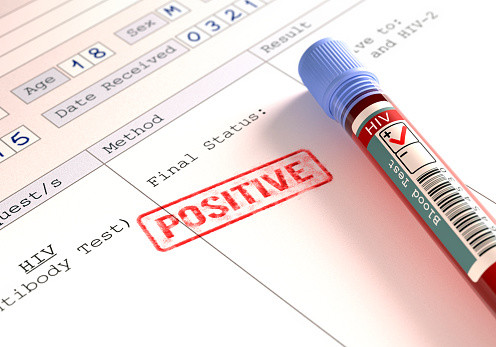US Centers of Disease Control: 50% of gay African American men at risk of getting HIV

A new study by the US Centers for Disease Control and Prevention (CDC) warns that gay American men of colour have a higher chance of being diagnosed with HIV that gay men who are white.
The study, which was released in February, revealed that one in two African American men who have sex with men (MSM) and one in four Hispanic MSM will be diagnosed with HIV in their lifetime. However, one in 11 white MSM will be diagnosed with the disease.
"While studies have shown that African Americans do not engage in riskier sexual behaviour compared to Americans of other races/ethnicities, African American men overall are almost seven times more likely than white men to be diagnosed with HIV in their lifetimes," the CDC said in its report.
The study found that African American men—both heterosexual and homosexual—have a one in 20 lifetime risk of HIV diagnoses. African American women, on the other hand, have a one in 48 lifetime risk.
Hispanics—one in 48 for men and one in 227 for women—have the second highest lifetime risk of diagnosis, the CDC revealed. While white men have a higher chance of getting the disease than Hispanic women—one in 132—, white women have the lowest lifetime risk of diagnosis at one in 880.
In general, the CDC reported that MSM have a one in six chance of contracting the disease, followed by women who inject drugs (one in 23), men who inject drugs (one in 36), heterosexual women (one in 241) and heterosexual men (one in 473).
"These estimates are a sobering reminder that gay and bisexual men face an unacceptably high risk for HIV—and of the urgent need for action. If we work to ensure that every American has access to the prevention tools we know work, we can avoid the outcomes projected in this study," said Dr Eugene McCray, the director of the CDC's Division of HIV/AIDS Prevention.
In terms of geography, the study found that people living in the South are more likely to be diagnosed with HIV than people in other parts of the country. People living in the District of Columbia have a one in 13 lifetime risk of HIV diagnosis. The greatest risks are found in Maryland (one in 49), Georgia (one in 51), Florida (one in 54) and Louisiana (one in 56).
The study did reveal good news, though. It found that the likelihood of a US citizen being diagnosed with HIV during their lifetime is one in 99, an improvement from 2004-2005 data which found the risk to be 1 in 78. According to RT, nearly 40,000 new cases of HIV are diagnosed in the US each year, with an astounding 10,000 of them involving gay and bisexual men.
The new report, which used HIV statistics from 2009 and 2010 from all 50 states and the District of Columbia, noted that there were some socioeconomic factors that contributed to the situation.
These included higher rates of unemployment, lower HIV awareness and having limited access to good-quality health care. RT noted that HIV has turned from a deadly disease to a "chronic threat".
© Copyright IBTimes 2025. All rights reserved.






















